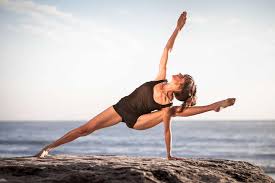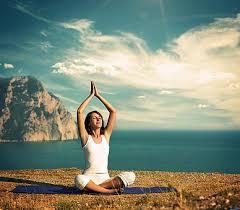transform
The purpose of yoga. Ashtanga Yoga Patanjali (part 2)
 The importance of asanas in yoga practice
The importance of asanas in yoga practice
So, yoga classes begin with oneself, with one’s lifestyle and with a restructuring of one’s thinking. Yoga is primarily an internal individual work and there are no competitors in it, since only a person himself can show his life whether he is engaged in yoga or not. However, the third stage of yoga is asana, the use of various body positions. What are the different positions of the body used for? In order to enable the internal, hidden reserves of the human body. This step is used when the student subsequently wants to move on to more powerful internal practices. This stage is auxiliary, it helps to generate internal energy in order to subsequently safely and painlessly go to the next stages of yoga practice. In India, a ha-tha yoga system was invented for this purpose, in Tibet there is another, Tibetan yoga, there is also Chinese qi-gong gymnastics, which is also essentially a Chinese form of yoga. All kinds of martial arts came, in essence, from this source. Continue reading
Yoga Nidra – magical yogic dream (part 2)
 At the same time, you should know that during the advancement of your consciousness you inevitably go through the sphere of hypnosis, which can disconnect you from yoga nidra. However, if you have not lost your awareness of the yoga nidra process, this vigilance continues automatically. During the practice of yoga nidra, consciousness remains active, we develop the ability to consciously observe, but not analyze. The main difference from hypnosis is that the practitioner does not lose his free will. If the process is not to his liking, he is always free to stop it. In addition, the very “grain” that is laid in the fertile soil of the subconscious or the so-called “sankalpa” (affirmation) – the practitioner formulates for himself. The instructor is just a guide offering you a specific technique and never forcing a process and not subordinating practitioners to his will. Continue reading
At the same time, you should know that during the advancement of your consciousness you inevitably go through the sphere of hypnosis, which can disconnect you from yoga nidra. However, if you have not lost your awareness of the yoga nidra process, this vigilance continues automatically. During the practice of yoga nidra, consciousness remains active, we develop the ability to consciously observe, but not analyze. The main difference from hypnosis is that the practitioner does not lose his free will. If the process is not to his liking, he is always free to stop it. In addition, the very “grain” that is laid in the fertile soil of the subconscious or the so-called “sankalpa” (affirmation) – the practitioner formulates for himself. The instructor is just a guide offering you a specific technique and never forcing a process and not subordinating practitioners to his will. Continue reading




